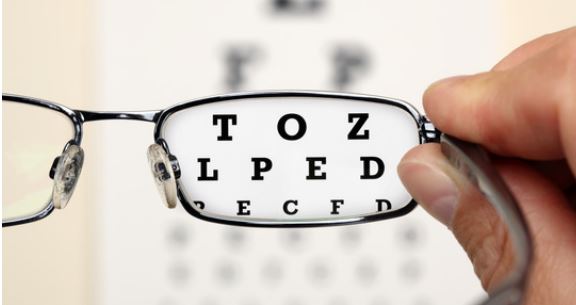This is a warning. This is advanced material. If you don’t understand it, you’ll need to study the NLP Practitioner material or call the office nearest you for clarification.
In Part 1 of this article I outlined the case that the NLP Eye-Patterns can shift according to the change or “flip” of the hemispherical dominance of the brain according to the intensity of the present activity of a shocking significant emotional event which was dramatic, for which we have no strategies, and cannot talk about. The “flip” in hemispheric brain dominance can happen as often as several times each day, or it can happen rarely or maybe never.
I also offered the thesis that this must be viewed in the larger context of how the people’s bodies and brains work and that the mechanical or cybernetic approach to human beings is not succeeding in offering a viable solution.
According to the German “Meta-Medicine” system of thinking about dis-ease I described in Part 1, there is a reason and logic for the brain working the way it does – there is a reason and logic behind the brain hemispheres “flipping” as a result of the significant emotional event. The big picture is that once you are aware of the way your brain works, you can work with it and change the things that need changing so that the dis-ease can disappear and behavior can work for you rather than randomly.
One of the things I discussed was the notion of defining brain dominance based on the “clap” system (see Part 1). But it seems that all-encompassing generalizations that were made about one side or the other having characteristic labels such as “logical and rational” for the left side or “creative and imaginative” for the right – is just another attempt to catalogue and fit everything in a tight box.
Even allopathic medicine agrees that although the lateral dominance is measurable, both hemispheres contribute to both kinds of processes, and in cases where one part of a specific region is either injured or destroyed, its functions can sometimes be assumed by a neighboring region in the same hemisphere or even “flip” over into another region in the opposite hemisphere.
But which hemisphere is dominant at the moment is definitely observable by eliciting the Eye-Patterns.
Therefore, let’s become really familiar with how the Eye-Patterns work:

This is the chart of the Eye Patterns of a normally organized*, right handed person
as you look at them. So it is not for you, it is as you look at others.
Vc – Visual Constructed Vr – Visual Remembered
Ac – Auditory Constructed Ar – Auditory Remembered
K – Kinesthetic Ad – Auditory Digital or Self Talk
*Normally organized does not mean “normal” in terms of normality VS abnormality. It is called ˜normally organized” simply because about 80 percent of people exhibit this chart, so based on averages it is considered majoritarian among population.
Beware of Flawed Questions
To elicit the eye patterns from a person here are the best questions to ask. Please understand that if you change these questions, you are on your own and the results you get may simply be wrong or inconclusive.
The questions are designed to elicit information in a certain way. The words in the questions are chosen very carefully. Good luck!
Visual Remembered (Vr) is about seeing images from memory, recalling things they have seen before.
QUESTION: “What was the color of the room you grew up in?” “What color was the first car you ever owned?”
Visual Constructed (Vc): Images of things that you have never seen before. When people are making it up in their head, they are using visual constructed.
QUESTION: “What would your room (car) look like if it were blue?”
Auditory Remembered (Ar): When you remember sounds or voices that you’ve heard before, or things that you’ve said to yourself before.
QUESTION: “Growing up, did you have a favorite pet? What was the sound of your pet’s voice?” “What was the very last thing I said?” “Can you remember the sound of your mother’s voice?”
Auditory Constructed (Ac): Making up sounds you have not heard before.
QUESTION: “What would I sound like if I had Donald Duck’s voice?”
Auditory Digital (Ad): This is where your eyes go when you are talking to yourself ” internal dialogue.
QUESTIONS: “Can you recite the pledge of Allegiance to yourself?” “Is there a poem from grade school that you remember?” “Can you say the Times Tables for 7 to yourself?”
Kinesthetic (K): (Feelings, sense of touch.) Generally you look in this direction when you are accessing your feelings.
QUESTION: “Do you have a favorite beach or place in the outdoors to walk? What does it feel like to walk there without shoes?” “What does it feel like to touch a wet rug?”
Even Small Exceptions in Eye-Patterns Can Make a Big Difference
Now, keep in mind the exceptions to the NLP Eye-Patterns. First, if there was trauma in the person’s past, the eye patterns may be inconclusive. In other words, there may be avoidance of a certain area. Let me give you an example – one of our students in the NLP Practitioner Training, had a father who was shouting at her a lot when she was a small child. As a result, this person would not have her eyes move into the Auditory Recall. As weird as you might think this is, she was avoiding the area of access where are the painful auditory memories.
Also certain cultures have the “look to talk rule” or “don’t look to talk rule” when children are taught from early life either to look the parents in the eyes or not, in which case the eye patterns elicitation could be inconclusive, but not necessarily.
Unquestionably societal conditioning (as in “if you don’t look in my eyes it means you’re lying”) has an impact on how the elicitation of the NLP Eye-Patterns will work. Trained people can simply look at you, but defocus and see images in between. The eyes’ ability to defocus can send you on a wild goose chase. In this case you will not get eye movements in certain areas or maybe not at all.
Military training also can skew the eye patterns. If for instance the cadets are trained to repeat the orders inside their head, when you ask them how does it feel to touch a wet rug, instead of accessing kinesthetic they will talk to themselves repeating your question and then figuring out by talking to themselves further what is the answer. This does NOT mean their kinesthetic is missing or is in the wrong place (instead of Ad for instance) but simply that they’re doing something else in their heads – and if you want to proceed you need to ask sufficient questions to find out what are they doing instead of accessing what you ask them to access.
These are just a few exceptions possible. Be aware of them and your elicitation of the NLP Eye-Patterns will run smoothly.
Until next time, be well

